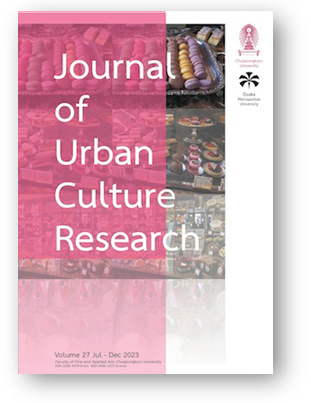Sacred and Profane Dialectics: A Study of Kecak Ramayana Performing Arts at Uluwatu Temple, Bali Indonesia
DOI:
https://doi.org/10.14456/jucr.2023.35Keywords:
Kecak; Ramayana; Tourist Art; Tourist Performance; Local Spiritual; IndonesiaAbstract
This research focuses on the Ramayana Kecak tourist art in Pecatu Village, South Kuta District, Badung Regency, Bali. The goal is to study the sacred and profane practices in the Ramayana Kecak. In this case the practice of entertainment is accompanied by religious spiritual practices. The method used is a descriptive critical analysis using data from interviews with key informants, observations and a document review. A functional structural theory is used to study the ideas, statements, activities and strategic efforts of the Ramayana Kecak performers. The results are based on the prospective AGIL theory, which explains sacred and profane practices through: (1) Adaptation: Ramayana Kecak is adapted as a main source of livelihood; (2) Goal Attainment: the village community develops the Ramayana Kecak to improve its economy; (3) Integration: the community integrates artistic and spiritual activities; (4) Latency Pattern Maintenance: bonds of kinship, solidarity, and social tolerance are built between artists, the community, and the audience.
Downloads
Published
How to Cite
Issue
Section
License

This work is licensed under a Creative Commons Attribution-NonCommercial-NoDerivatives 4.0 International License.
Authors authorize the JUCR to publish their materials both in print and online while retaining their full individual copyright. The copyright of JUCR volumes is retained by Chulalongkorn University.
The views and opinions expressed herein are those of the individual author(s) and do not necessarily reflect the policies or opinions of the Journal (JUCR), it editors and staff, Chulalongkorn University, or Osaka Metropolitan University.








